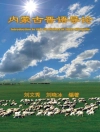Third language acquisition is a common phenomenon, which presents some specific characteristics as compared to second language acquisition. This volume adopts a psycholinguistic approach in the study of cross-linguistic influence in third language acquisition and focuses on the role of previously acquired languages and the conditions that determine their influence.
विषयसूची
Jasone Cenoz, Britta Hufeisen and Ulrike Jessner: Introduction
1 Jasone Cenoz: The Effect of Linguistic Distance, L2 Status and Age on Cross-linguistic Influence in Third Language Acquisition
2 Björn Hammarberg: Roles of L1 and L2 in L3 Production and Acquisition
3 Gessica De Angelis and Larry Selinker: Interlanguage Transfer and Competing Linguistic Systems in the Multilingual Mind
4 Håkan Ringbom: Lexical Transfer in L3 Production
5 Jean-Marc Dewaele: Activation or Inhibition? The Interaction of L1, L2 and L3 on the Language Mode Continuum
6 Peter Ecke: Lexical Retrieval in a Third Language: Evidence from Errors and Tip-of-the-Tongue States
7 Anna Herwig: Plurilingual Lexical Organisation: Evidence from Lexical Processing in L1-L2-L3-L4 Translation
8 Martha Gibson, Britta Hufeisen and Gary Libben: Learners of German as an L3 and their Production of German Prepositional Verbs
9 Robert J. Fouser: Too Close for Comfort? Sociolinguistic Transfer from Japanese into Korean as an L3
10 Eric Kellerman: New Uses for Old Language: Cross-linguistic and Cross-gestural Influence in the Narratives of Non-Native Speakers
Index
लेखक के बारे में
Jessner, Ulrike is Professor at the University of Innsbruck (Austria) and the University of Pannonia, Veszprem (Hungary) where she acts as founding member of the International Doctoral School of Multilingualism. She has published widely in the field of multilingualism with a special focus on the acquisition of English in multilingual contexts. She is the co-author of A Dynamic Model of Multilingualism (with Philip Herdina in 2002) which pioneered DSCT in language acquisition research.












